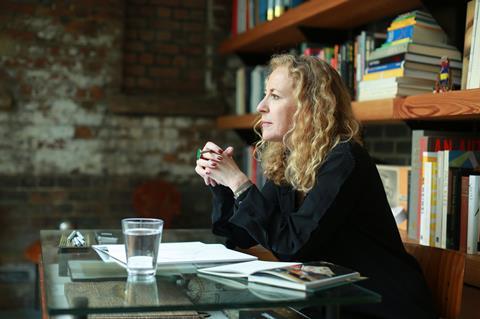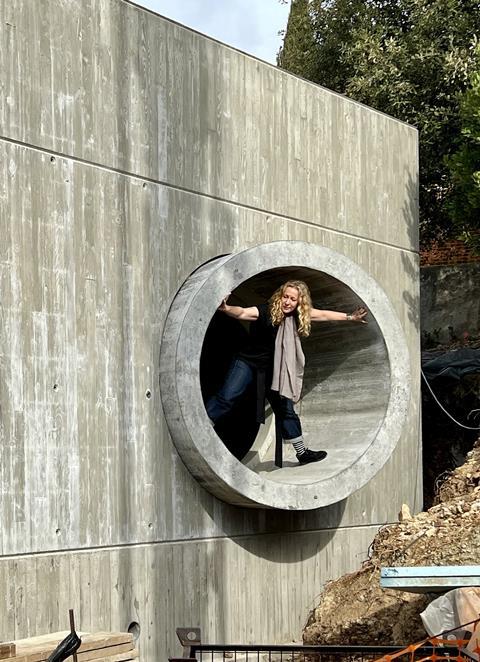We need more women in architecture if we are to address our profession’s huge challenges, writes Sally Mackereth

On International Women’s Day earlier this month, I joined a panel discussion hosted by the Design Council, the UK’s independent national advisory body on design and advocate for its critical role in society. The event was positively celebratory in tone, and focussed on women and their significant contributions in the field of architecture. Yet inevitably our debate turned to the plight of our future generations of place-makers and the enormous global challenges faced by young emerging architectural studios.
This desperate predicament and the huge pressures on a generation of architects to find solutions is nowhere better expressed than by Australian feminist Elizabeth Grosz, professor of Women’s Studies and Literature at Duke University. In her Letter to a Young Architect published mid-pandemic in the Architectural Review, 21st December 2020, she wrote:
“It is your task, architects of the future, to think, design, invent and build not only for us but for the environment that supports and sustains us. That is, to design, invent and build for the future and not just the present. This is an honourable and noble task, one that will outlive you.”
Yet how can we design for a better world when it appears that still so few of those researching and designing our cities, our galleries, our schools, our homes are women? It is over 80 years since Le Corbusier came up with Le Modulor, an anthropomorphic system of measurement standardised on the human body – the male body (female measurements were entirely excluded of course!) Is modern architecture still so blinkered by this kind of attitude?

Though the tide of gender equality has been turning in recent years, this is still a profession in which a woeful 29% of registered architects identify as female in the UK, despite a more gender-balanced ratio graduating from our schools of architecture. As a practising architect (it’s almost 30 years since I graduated from the AA); an employer (and mentor) of young primarily female architects; a part-time architectural teacher and a student (I’ve recently enrolled in a programme for a practice-based research PhD at RMIT), I am appalled, though not entirely surprised by this statistic.
The big question of course is - ‘why?’ Might it be down to the protracted years of training to qualify, coinciding with a time when most women might be considering having children? Is it the exceptionally long working day (and unpaid hours) that eats into the evenings (not ideal for young mothers)?
There’s also the fact that projects take so darn long – a building can take several years to realise. Most probably it’s a combination of all these factors and more that result in women having to make tough life choices early on, like motherhood or keeping their foothold on the career ladder in this systemically patriarchal profession.
The other day I ran into my friend, Eva Jiřičná (also my professional role model) at Heathrow airport. Both of us were en route to site meetings overseas and sat together in the BA lounge and animatedly talked shop, as we love to do. Eva, like me, is a big champion of women in architecture. She believes that women that can stay the course really have the edge in this profession and tend to work extra hard to prove themselves more than capable.
Indeed, studies have shown that the female brain is better equipped for multi-tasking than that of our male colleagues. And whilst our gender is a significant point of difference in large site meetings where 99% of the contractor team is male, I believe that typically female skills of navigating a testosterone-fuelled stand-off between men can be usefully deployed in this industry.
“And let’s be honest, what man does not relish the prospect of explaining how things work to a woman?!”
Yet understandably, even the most talented young female architects are apprehensive about the building site, and how they will cope in this last bastion of male machismo. Eva recounts how as a child she would accompany her architect father to site meetings. It is there that she realised how much she could learn about making buildings by engaging with contractors to better understand their techniques, skills and tap into their knowledge.
“It is so important that women are not intimidated by this essential part of the job where architects can really ask questions and learn a lot. And let’s be honest, what man does not relish the prospect of explaining how things work to a woman?! The best projects are those where there is mutual respect between the architect and builder and a feeling of camaraderie that extends to sharing a site cuppa in a chipped-never-washed mug which seals the friendship forever.” says Eva.
On a final note I wanted to share that on a recent trip to Egypt, I was thrilled to discover that women in architecture date back thousands of years. The ancient god of architecture (as well as wisdom, knowledge, and writing) turns out to be female.
Known as Seshat, the goddess was often depicted in carvings and paintings holding tools and knotted ropes to survey the land and to lay out the temples, assuring the pharaohs of their sacred alignments through her astutely precise dimensions. Her distinctive robes were made of leopard skin – this spotted feline dress was thought to represent the night sky and stars as a symbol of eternity. So naturally I have taken to wearing more leopard print to work in honour of the goddess of architecture and her important legacy.
Postscript
Sally Mackereth is principal of Studio Mackereth
















No comments yet